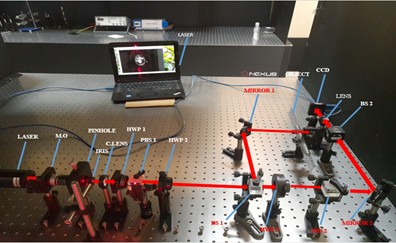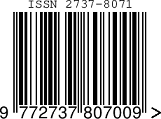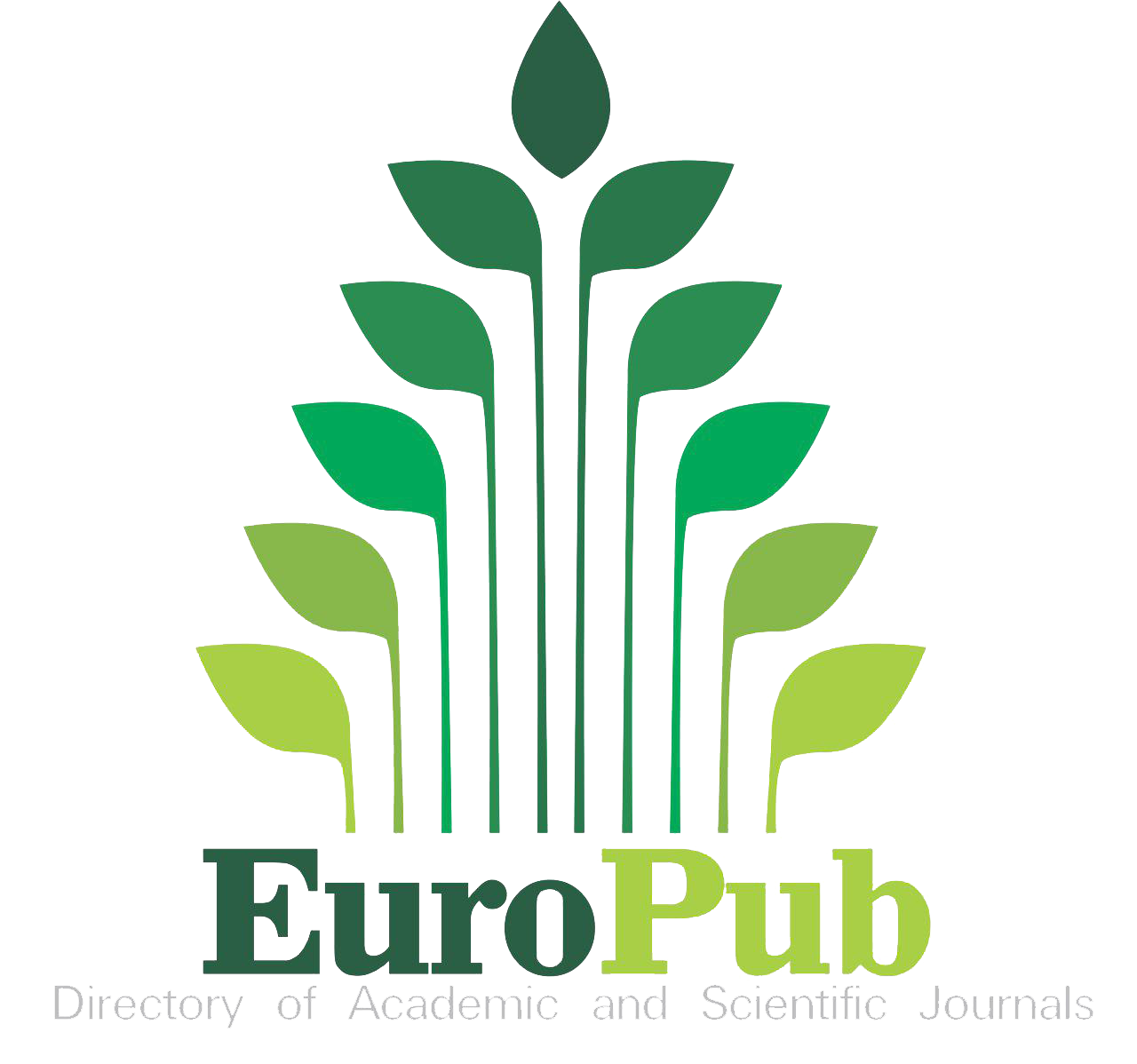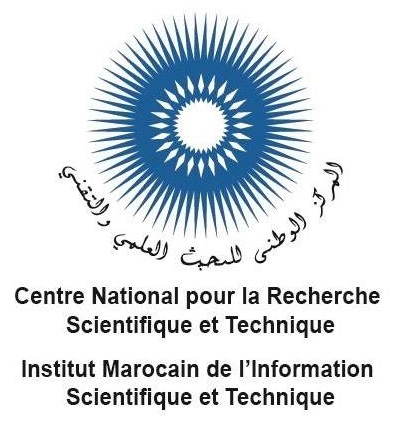The role of beam polarization on the quality of digital holograms
Keywords:
hologram , intensity., phase, polarization, polarization angleAbstract
Holography is an imaging technique that has attracted much attention since its inception due to its potential of recording three-dimensional images. As a result, the technique has been applied in fields like interferometry. However, its recording relied on the use of non-polarized sensitive materials which have been limited to the isotropic materials. In this study, we report the role of beam polarization on quality of holograms in respect to important parameters such as; the distance of the Charge Coupled Device from the object and variation of polarization angle. By varying the distance of the camera from the object, a distance of 15cm was clearly noticed to have produced holograms with a more comprehensive set of light wave characteristics; intensity, phase, and polarization state. We have also managed to record and reconstruct holograms at different polarization angles with significant impact on holograms at 0?, 15?, 30? and 45? whose amplitude and phase information was extracted at an optimum distance of 15cm. By comparing the results from these angles, holograms at 45? were of high quality. This advancement not only enhances the visibility of objects that are otherwise obscured or low contrast but also broadens the application of holography beyond isotropic materials.
Downloads
References
S. M. Njoroge and D. M. Kinyua, “Polarized Phase Holograms of High Diffraction Efficiency,” OALib, vol. 10, no. 05, pp. 1–9, 2023, doi: 10.4236/oalib.1110120.
C. Pawar, D. Fulari, and M. Dongare, “Monitoring Intrinsic Stress Induced in the CdSe Thin Films during deposition by double exposure Holographic Interferometric,” Chalcogenide Lett., vol. 7, no. 7, pp. 455–463, 2010.
L. Ackermann, C. Roider, K. Cvecek, N. Barré, C. Aigner, and M. Schmidt, “Polarization-controlled nonlinear computer-generated holography,” Sci. Rep., vol. 13, no. 1, p. 10338, Jun. 2023, doi: 10.1038/s41598-023-37443-z.
S. N. Maina, G. K. Rurimo, P. M. Karimi, D. M. Kinyua, and C. F. Ominde, “Thermal Stress Monitoring on Piston Rings by Real Time Holographic Interferometry,” Opt. Photonics J., vol. 03, no. 08, pp. 379–384, 2013, doi: 10.4236/opj.2013.38059.
L. Dhar, K. Curtis, and T. Fäcke, “Coming of age,” Nat. Photonics, vol. 2, no. 7, pp. 403–405, Jul. 2008, doi: 10.1038/nphoton.2008.120.
X. Li, H. Hou, K. Liu, J. Lou, G. Wang, and T. Cai, “Circularly Polarized Transmissive Meta?Holograms with High Fidelity,” Adv. Photonics Res., vol. 2, no. 9, p. 2100076, Sep. 2021, doi: 10.1002/adpr.202100076.
S.-C. Jiang et al., “Controlling the Polarization State of Light with a Dispersion-Free Metastructure,” Phys. Rev. X, vol. 4, no. 2, p. 021026, May 2014, doi: 10.1103/PhysRevX.4.021026.
A. Arbabi, Y. Horie, M. Bagheri, and A. Faraon, “Dielectric metasurfaces for complete control of phase and polarization with subwavelength spatial resolution and high transmission,” Nat. Nanotechnol., vol. 10, no. 11, pp. 937–943, Nov. 2015, doi: 10.1038/nnano.2015.186.
A. Olivares-Pérez, M. J. Ordóñez-Padilla, and S. Toxqui-López, “Holograms in Albumins and Optical Properties Recorded in Real Time,” Opt. Photonics J., vol. 05, no. 05, pp. 177–192, 2015, doi: 10.4236/opj.2015.55017.
U. Ruiz, P. Pagliusi, C. Provenzano, K. Volke-Sepúlveda, and G. Cipparrone, “Polarization holograms allow highly efficient generation of complex light beams,” Opt. Express, vol. 21, no. 6, p. 7505, Mar. 2013, doi: 10.1364/OE.21.007505.
R. Wei et al., “Review on polarization holography for high density storage,” Opto-Electron Eng, vol. 46, no. 3, p. 180598, 2019.
W. Su, Q. Hu, M. Zhao, X. Yuan, X. Guo, and H. Ruan, “Development status and prospect of opticall storage technology,” Opto-Electron Eng, vol. 46, no. 3, p. 180560, 2019.
L. Jianhua, L. Jinpeng, L. Xiao, L. Jiaqi, and T. Xiaodi, “Volume Holographic data storage,” Chin. J. Lasers, vol. 44, no. 10, p. 1000001, 2017.
K. Kuroda, Y. Matsuhashi, R. Fujimura, and T. Shimura, “Theory of polarization holography,” Opt. Rev., vol. 18, no. 5, pp. 374–382, Sep. 2011, doi: 10.1007/s10043-011-0072-5.
C. F. Ominde, S. M. Njoroge, G. K. Rurimo, P. M. Karimi, D. M. Kinyua, and G. N. Nyakoe, “Optimal conditions for High Diffraction efficiency,” Int. J. Opt. Appl., vol. 3, no. 4, pp. 53–58, 2013.
Y. Zhai, L. Cao, Y. Liu, and X. Tan, “A Review of Polarization-Sensitive Materials for Polarization Holography,” Materials, vol. 13, no. 23, p. 5562, Dec. 2020, doi: 10.3390/ma13235562.
A. Ozols, V. Kokars, P. Augustovs, I. Uiska, K. Traskovskis, and D. Saharov, “Effect of light polarization on holographic recording in glassy azocompounds and chalcogenides,” Open Phys., vol. 9, no. 2, pp. 547–552, Apr. 2011, doi: 10.2478/s11534-010-0125-6.
V. Tiwari, S. K. Gautam, D. N. Naik, R. K. Singh, and N. S. Bisht, “Characterization of a spatial light modulator using polarization-sensitive digital holography,” Appl. Opt., vol. 59, no. 7, p. 2024, Mar. 2020, doi: 10.1364/AO.380572.
D. Barada, T. Ochiai, T. Fukuda, S. Kawata, K. Kuroda, and T. Yatagai, “Dual-channel polarization holography: a technique for recording two complex amplitude components of a vector wave,” Opt. Lett., vol. 37, no. 21, p. 4528, Nov. 2012, doi: 10.1364/OL.37.004528.
F. Cardano, E. Karimi, S. Slussarenko, L. Marruci, C. de Lisio, and E. Santamato, “Polarization pattern of Vector vortex beams generated by q plates with different topological charges,” Appl. Opt., vol. 51, no. 10, pp. C1–C6, 2012.
J. Zhao et al., “Optical vortex switch based on multiplexed volume gratings with high diffraction efficiency,” Opt. Express, vol. 29, no. 21, pp. 34293–34301, 2021.
J. Wang et al., “Linear polarization holography,” Opto-Electron. Sci., vol. 1, no. 2, pp. 210009–210009, 2022, doi: 10.29026/oes.2022.210009.
R. K. Singh, “Digital Polarization Holography: Challenges and Opportunities,” in HMAM2, MDPI, Mar. 2023, p. 10. doi: 10.3390/HMAM2-14112.
P. Picart, Ed., New techniques in digital holography. Instrumentation and measurement series. London?: Hoboken, NJ: ISTE Ltd?; John Wiley & Sons, Inc, 2015.
U. Schnars and W. P. O. J ptner, “Digital recording and numerical reconstruction of holograms,” Meas. Sci. Technol., vol. 13, no. 9, pp. R85–R101, Sep. 2002, doi: 10.1088/0957-0233/13/9/201.
T. Kreis, Handbook of holographic interferometry: optical and digital methods. Weinheim [Great Britain]: Wiley-VCH, 2005. doi: 10.1002/3527604154.

Downloads
Published
How to Cite
Issue
Section
License
Copyright (c) 2025 David Ekuwom Kaile, Stephen maina Njoroge, Geofrey Kihara Rurimo

This work is licensed under a Creative Commons Attribution 4.0 International License.
Copyright on any article in the International Journal of Engineering and Applied Physics is retained by the author(s) under the Creative Commons license, which permits unrestricted use, distribution, and reproduction provided the original work is properly cited.
License agreement
Authors grant IJEAP a license to publish the article and identify IJEAP as the original publisher.
Authors also grant any third party the right to use, distribute and reproduce the article in any medium, provided the original work is properly cited.
Similar Articles
- Olusumbo Fajemilua, Olumuyiwa Samson Aderinola , Multi-Criteria Evaluation of XL-Terrasil and Metakaolin Geopolymer for Subgrade Improvement in Rural Roads of Ondo State, Nigeria , International Journal of Engineering and Applied Physics: Vol. 5 No. 2: May 2025
You may also start an advanced similarity search for this article.














